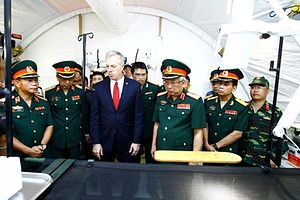On October 1, Vietnam officially began a much-anticipated deployment of a level-2 field hospital to South Sudan. Though this was just part of Vietnam’s broader commitment to playing a role in international peacekeeping, it nonetheless deserves mention given the importance Hanoi has placed on it for domestic and international reasons.
As I have noted before in these pages, Vietnam has long placed an emphasis on peacekeeping as part of its contributions to the international community and within its defense relationships with key partners. Vietnam’s contribution to UN peacekeeping operations officially began back in 2014, and Hanoi has sent personnel to missions in South Sudan and the Central African Republic. As Vietnam has gained experience with respect to peacekeeping, Hanoi has also been working with other partners in further boosting its role in this regard, including in serving as a training center for UN peacekeeping operations in the region.
The focus over the past few months has been preparing for the deployment of a level-2 field hospital (L2FH) to South Sudan. Though preparations have been made with respect to the L2FH since November 2014 and it has been built up to have a permanent staff of 63 personnel, the development itself is a significant one with respect to Vietnam’s participation in UN peacekeeping operations because while Hanoi has contributed in terms of observers and staff, this is the first time a military unit is being deployed to join such an operation.
On October 1, the L2FH contingent officially set off for South Sudan as part of this ongoing effort. The development was marked with a ceremony held by the defense ministry at Tan Son Nhat International Airport that was attended by top Vietnamese officials including Deputy Defense Minister Nguyen Chi Vinh. In his remarks, Vinh framed the L2FH development as an example of Vietnam’s contribution to international peace as well as an opportunity to test the capacity of its military in this respect. There are also other aspects of its significance, such as the fact that 17 percent of the personnel being sent are women in line with Hanoi’s ongoing efforts to emphasize that it is in line with the UN priority on gender equality.
To be sure, the L2FH is just one of several manifestations of Vietnam’s growing involvement in peacekeeping operations. A second L2FH is expected to be established as well which will eventually replace the first, and Hanoi has also said previously that it will seek to dispatch an engineering company sometime in 2019 or 2020. But as these developments unfold, they will no doubt be interesting to watch not only on their own terms but within the broader context of Vietnam’s defense policy more generally.

































